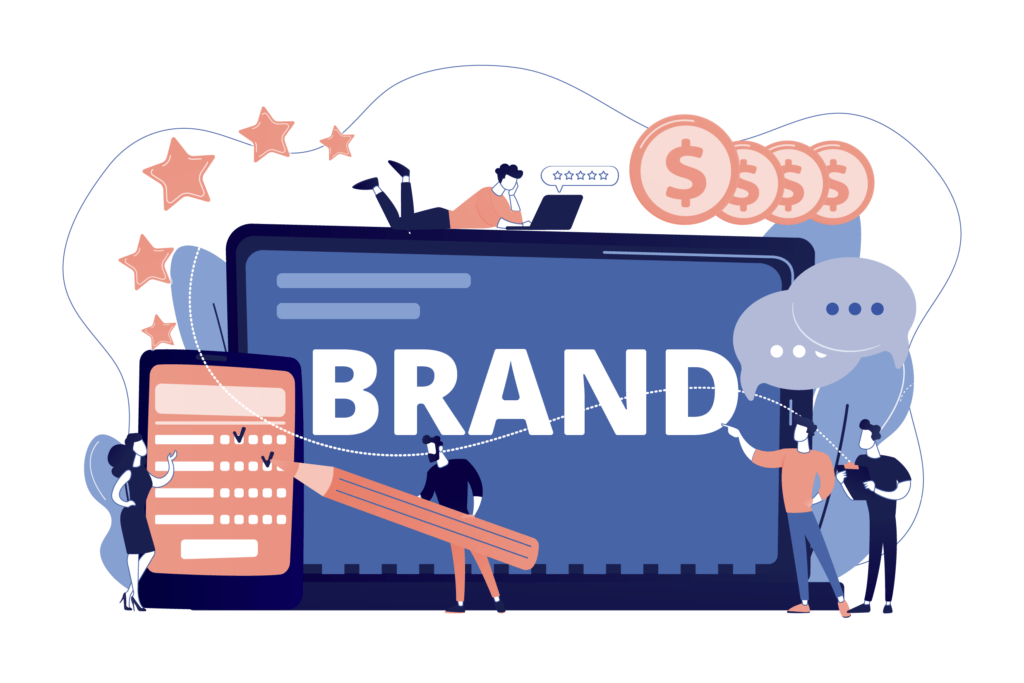In today’s hyper-saturated marketplace, a logo is no longer enough. If you want your business to stand out, earn trust, and grow sustainably, you need more than aesthetics. You need a brand—something layered, strategic, and emotionally resonant.
In this comprehensive blog, we break down the entire process of how to build a brand—not just a logo, not just colors, but a full-fledged identity that aligns with your mission, speaks to your audience, and evolves over time. Whether you’re an entrepreneur, freelancer, or design enthusiast, this guide will walk you through the essentials of professional brand building.
Why Building a Brand Is More Than Just a Logo
One of the biggest misconceptions is equating a brand with a logo. A logo is simply a visual marker—a symbol. A brand, however, is the sum of everything people associate with your business: your values, voice, visuals, experience, and more.
Think of your brand as a person. It has a tone, a backstory, a personality, and a reputation. All of these need to be carefully constructed and communicated—starting with strategy.
Step 1: Start With Strategy Not Aesthetics
Before diving into visuals, pause and answer the most important question: why should anyone care about your brand?
Your strategy should include:
- Purpose: What are you trying to change in the world?
- Mission: What do you deliver to your customers that others don’t?
- Vision: Where is your brand heading in the long term?
- Target Audience: Who exactly are you speaking to?
- Core Values: What does your brand stand for?
These answers form the foundation of your brand identity. Every creative decision—color, font, imagery—should trace back to this strategy.
Pro Tip: Your brand strategy is your creative compass. Without it, your designs might look good but lack direction or emotional connection.
Step 2: Define the Brand Personality and Voice
Once your strategy is in place, it’s time to give your brand a personality. This will influence everything from copywriting to visual style.
Ask yourself:
- If your brand were a person, how would it speak?
- Is it playful or sophisticated? Bold or minimal?
- What tone should your messaging carry—formal, friendly, edgy?
Defining voice helps maintain consistency across marketing channels, packaging, and even customer support.
Step 3: Visual Discovery and Moodboarding
With a clear identity and voice, it’s time to translate ideas into visuals. But before opening design software, start with research.
- Use platforms like Pinterest, Behance, and Dribbble to collect references.
- Look into colors, textures, packaging, logos, typefaces, and photography styles that match your strategy.
- Build moodboards to communicate the look and feel you’re aiming for.
This stage helps align internal teams and clients before any heavy design work begins.
Step 4: Creative Direction Select a Style That Reflects Your Values
Good design communicates. Great design aligns.
Creative direction is where you decide the overarching visual style your brand will use. It must reflect both your audience’s preferences and your brand’s personality.
For example:
- A fun, youthful brand might use bold colors and round fonts.
- A premium organic food brand might use minimal layouts, earthy tones, and elegant typography.
Create a few distinct visual directions and test them internally or with focus groups. Locking in this creative direction early prevents confusion and design revisions down the road.
Step 5: Logo Design and Conceptual Sketching
Now comes the part most people rush into—logo creation. But when done properly, it’s built on a strong foundation.
Start with sketching:
- Explore symbols that align with your strategy and cultural context.
- Avoid generic clichés unless you can give them a fresh twist.
- Experiment with shapes, typography, and monograms.
Even if you’re not a professional illustrator, this sketching phase is critical for ideation. The best ideas often emerge in analog form before going digital.
Step 6: Vectorization and Digital Refinement
Once you’ve selected the strongest concept, it’s time to refine it digitally.
- Use tools like Adobe Illustrator to vectorize your logo.
- Focus on scalability and legibility across different sizes and formats.
- Pair the logo with a fitting typeface and define spacing, balance, and proportions.
At this point, also begin building out brand assets such as:
- Color palette
- Typography system
- Icon sets
- Textures or backgrounds
- Image direction
This is the visual language your brand will use everywhere—on your packaging, website, ads, and products.
Step 7: Packaging and Application Test the Brand in the Real World
A brand isn’t real until it touches the customer.
Take your identity and test it on the platforms or products where it will be experienced:
- For a food product, start with packaging and labels.
- For a software tool, begin with interface design and onboarding screens.
- For a café, focus on menu layouts and interiors.
The goal is to ensure consistency and coherence when the brand identity meets real-world touchpoints.
Don’t design in a vacuum. Test how your brand identity holds up in the contexts that matter most.
Step 8: Brand Guidelines and System Thinking
Once your identity system is finalized, it’s important to document it.
Create a brand guideline document that includes:
- Logo usage and spacing rules
- Color values for digital and print
- Font choices and hierarchy
- Image direction and tone
- Examples of do’s and don’ts
This ensures everyone who touches your brand—designers, developers, partners—maintains consistency.
Step 9: Understand That Branding Is Ongoing
Your brand is not static.
As your audience evolves and your business grows, so must your brand. Be ready to adapt without losing your core identity. Remember:
- A brand is what people feel about your business.
- Every interaction—from your packaging to your tweets—shapes this feeling.
- Regularly audit your branding touchpoints and adapt as necessary.
Branding is perception, and perception is constantly evolving.
Need Help with Organic Growth Too?
If you’re looking to not only build a brand but also grow your audience, you’ll love our other guide:
👉 How to Grow Your Business Organically With Social Media – A Complete Step-by-Step Guide
It pairs perfectly with brand building and helps convert your identity into impact.
Final Words
Building a brand is a structured yet creative process. It requires both intuition and intention. When done right, it becomes your strongest business asset—building trust, improving recognition, and driving long-term loyalty.
Whether you’re a startup founder, designer, or marketer, this framework can help you create brands that are not only beautiful—but also meaningful and strategic.
Credit
This blog draws inspiration from the brilliant process showcased by Shantanu Kumar, a creative brand designer who shared his branding journey for a Himalayan chili oil project. You can watch his full design breakdown on YouTube here.





